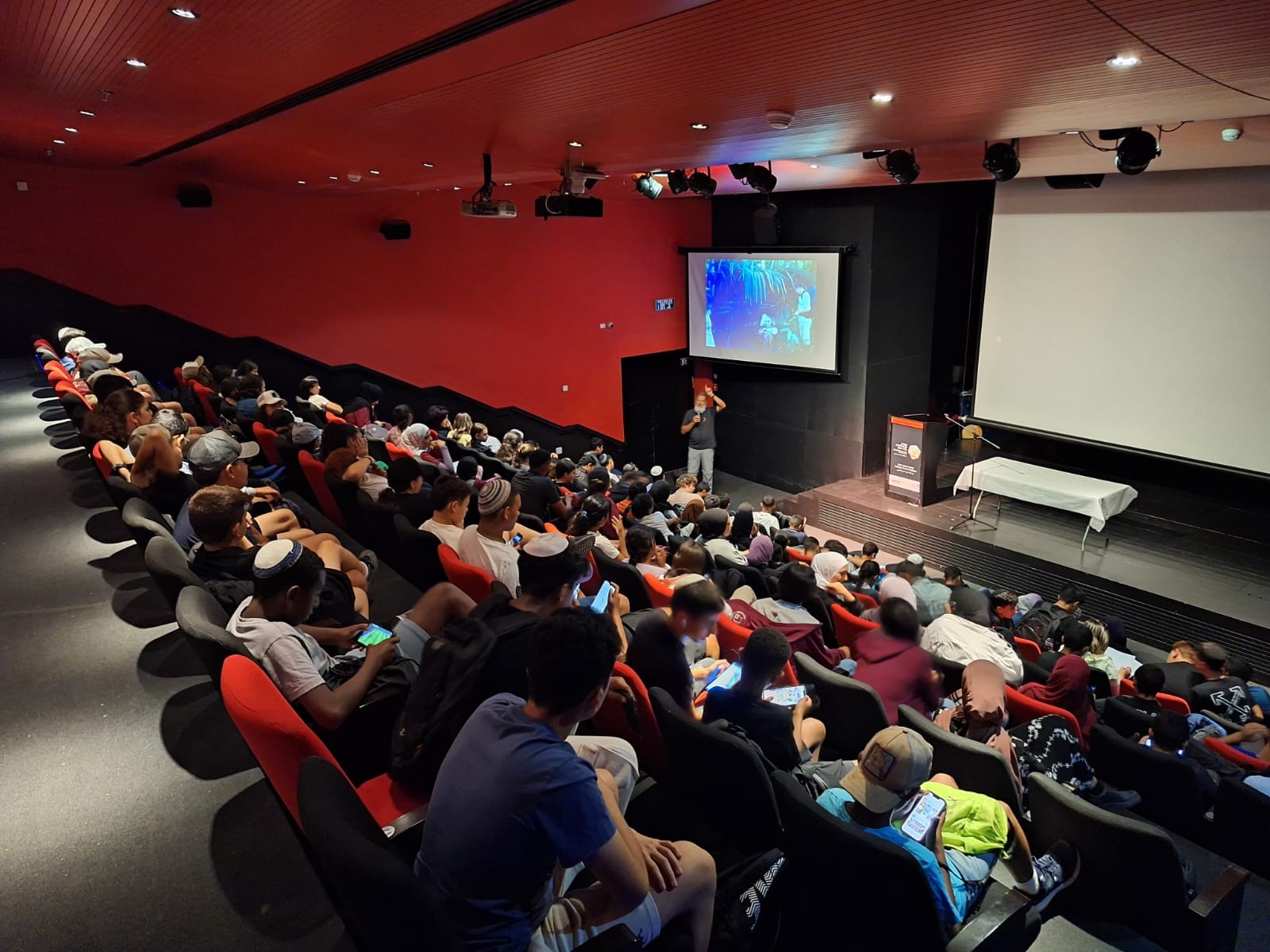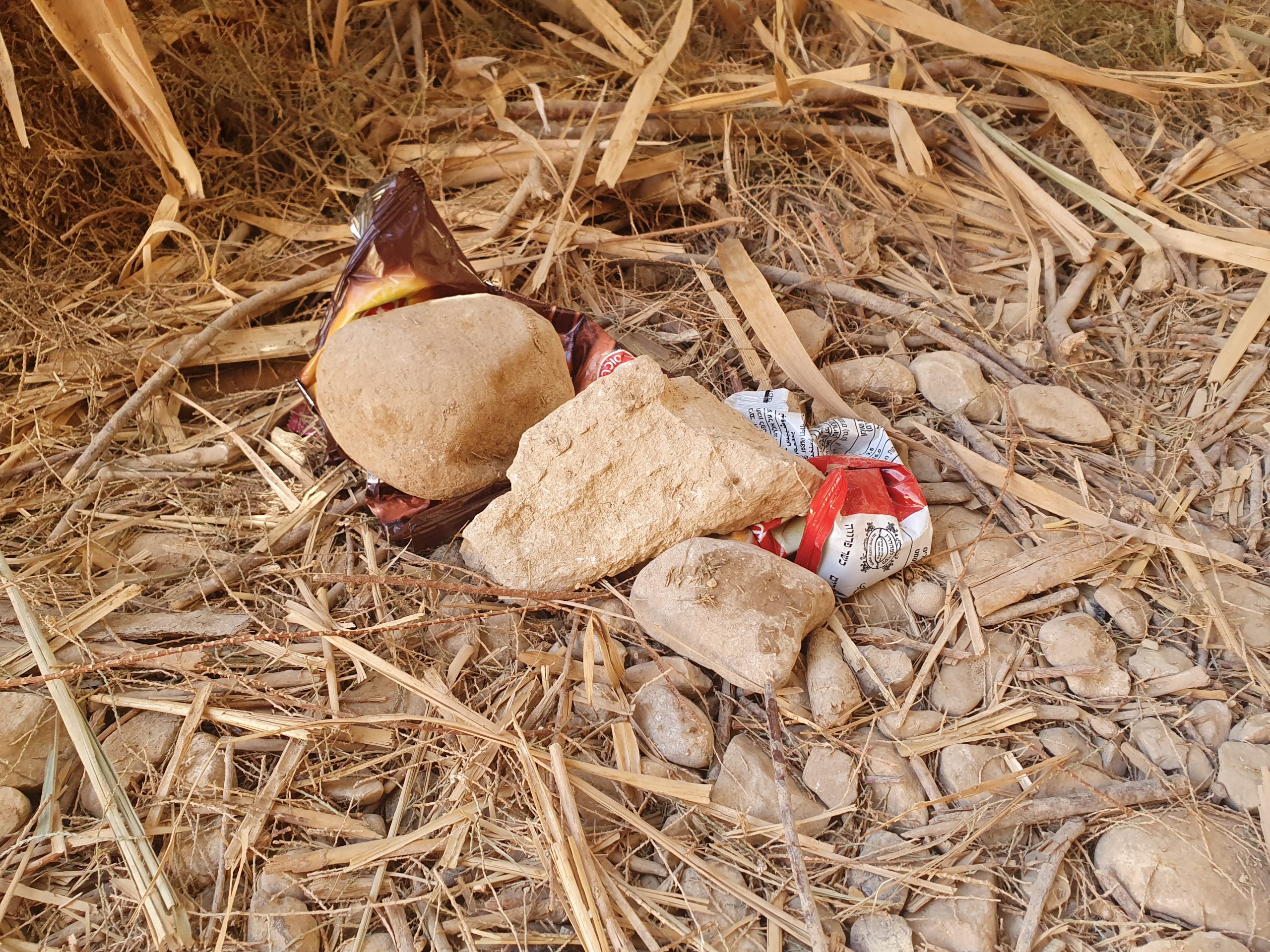The Forgotten Reef
August 27, 2020There is a little natural wonder, hidden underwater just off the beach of the Bat Galim neighborhood in Haifa. But the authorities’ continued disregard for the site could significantly damage its unique ecosystem
When scuba divers daydream about shoals of fish, rays, colorful jellyfish, and giant sea turtles, they most likely envision the coral reefs of Australia, the Philippines, or Mexico, or at least fantasize about a trip to the Red Sea. Many of them might not even know that they can find a fascinating underwater world just off the coast of Haifa.
Although widely unnoticed by the public, this unique and spectacular natural site faces numerous threats, and the authorities’ continued disregard for its inherent value further exacerbates the situation.
Walking along Bat Galim beach, the ecological wealth hidden underwater just offshore is not easy to see. But close to the beach there is a thick algae forest that grows on the reef, which, along with the shellfish and fish, is an important part of the diet of the brown and green sea turtle, which comes to the area throughout the year, especially during the breeding season.
The reef is home to a variety of fish, including groupers, sea breams, houndfish, and barracudas, while stingrays inhabit the sandy patches along the bottom of the reef. Nestled between the thick curtains of algae, invertebrates like squid, octopuses, crabs, and sea slugs thrive undisturbed from the commotion around them.
During the bird migration season, seabirds, like seagulls, petrels, and cormorants, also come to the Bat Galim Bay to rest and feed on the abundance of fish.
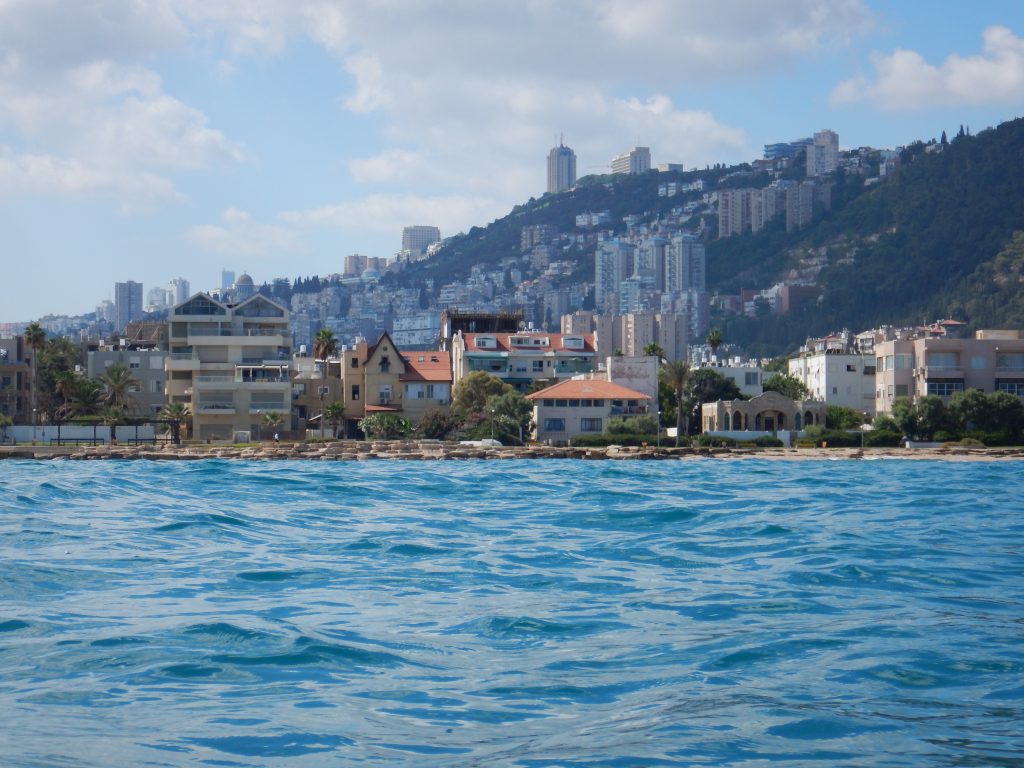
A rare combination of rock, water, and sunlight
How did the reef in Bat Galim attain such ecological wealth?
“The reef is an underwater part of the Carmel ridge, whose extensions descend gently into the sea to a depth of about 300 meters. The gradual descent creates a wide rock step with a moderate slope, which extends 2 kilometers towards the open sea, which is actually the bottom of the reef, “explains Nadav Beerune, one of the founders of “Bat Galim Sea Defenders” and a resident of the neighborhood.
“Unlike the other reefs on the Mediterranean’s shores, this is not kurkar rock, but limestone, which is a harder stone. It is also the only coastline in the country facing north and not west – so unusual wind and (current) flow regimes are created here,” she adds.
The rare combination of hard, very large bedrock, and relatively calm shallow waters without strong waves from the west through which sunlight easily penetrates, allows extensive parts of the reef to be covered with algae. This creates a shallow and protected lagoon, and unique habitat for many species of fish and invertebrates, especially in the early stages of their lives – before they venture out to sea.
In 2015, several residents of the Bat Galim neighborhood, who had already begun to discover the reef’s uniqueness, decided to establish the Bat Galim Sea Defenders community. Since then, the community members have been organizing beach and water cleanups, dives designed to explore the ecological diversity of the reef, and information activities for the general public, including screenings of documentaries filmed during the dives.
During their exploration dives, the “sea defenders” discovered that the reef is especially essential to the next generation of various local species.
Some of the most significant observations made during the dives were mating sea turtles, young green sea turtles, turtles laying eggs in the last remaining strips of sand on the beach, as well as large flocks of round fantail stingray and the critically endangered blackchin guitarfish – including many pregnant females.
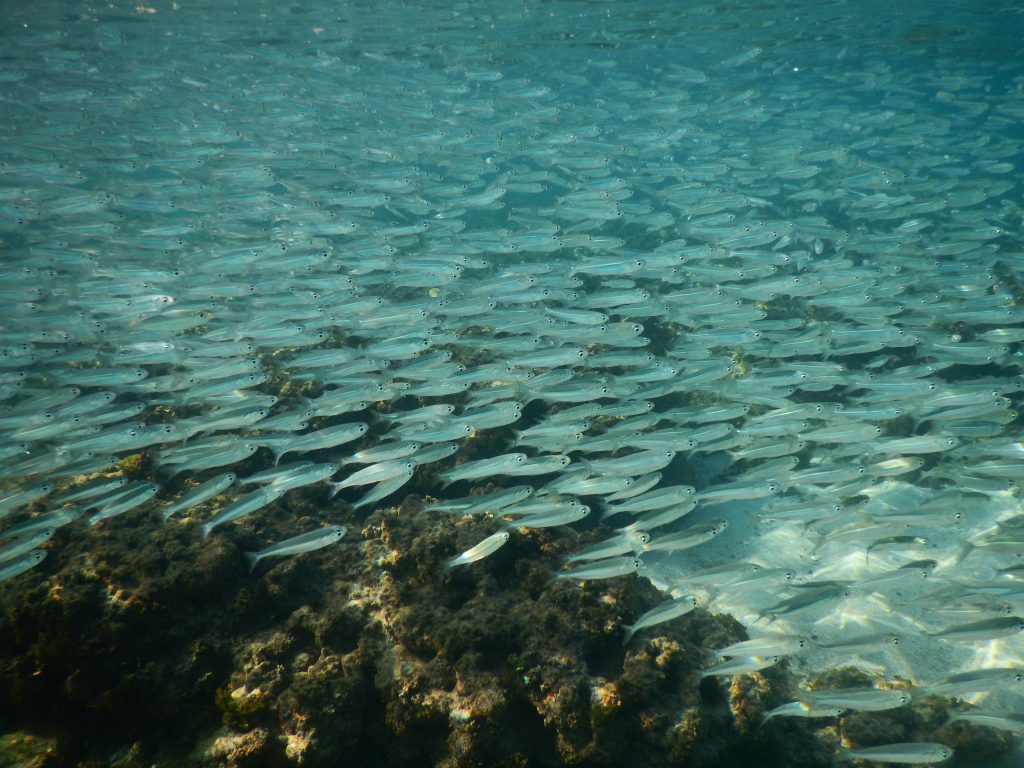
An underwater world in danger
As of today, the Bat Galim reef is not a protected area. Although included in the original plan for the adjacent Rosh HaCarmel Marine Reserve, which was recently approved by the Israel Nature and Parks Authority, the reef was axed in the early development stages.
Sarah Ohayon, marine ecologist and “Sea Defenders” activist, explains what might happen when the reserve adjacent to the reef, which already suffers from overfishing, is established.
“A considerable part of the reserve will be closed to fishing. As a result, increased fishing activity in the Bat Galim reef might cause fish populations to decline drastically, and consequently harm other animals that feed on the fish.
In addition, waste that is dumped carelessly on the promenade near the reef quickly finds its way to the sea. According to Ohayon, waste found at the site includes fishing lines, hooks, nylon threads, disposable utensils, plastic bags, and food packaging. Debris is also washed out to sea from nearby beaches sections that are cleaned infrequently.
“Animals might get entangled in the larger pieces of waste, or eat them and suffocate. The smaller pieces decompose into microplastic particles, which enter the marine food web,” says Ohayon. “Drainpipes, located along the coast and connected to the city and the nearby hospital, wash additional debris into the sea during rainfall events,” she adds.
“In order to promote a reserve in a certain area,” Ohayon explains, “the Israel Nature and Parks Authority has to conduct a thorough ecological survey. Then a document has to be produced detailing why this area should be declared a nature reserve. However, no such survey has been conducted at the Bat Galim reef.
In another attempt to push for the protection of the reef, the “Sea Defenders” decided to submit a request for a marine ecological survey to the “Israel Open Space Conservation Foundation” at the Israel Land Authority. In this document, which was submitted in collaboration with the Haifa Municipality, the survey was proposed as a preliminary step in planning an urban marine nature park. But the proposal was rejected on the grounds that it does not meet the threshold conditions as the fund does not allow the submission of projects that include marine areas. It seems to be a Sisyphean challenge to overcome the bureaucratic obstacles that prevent the protection of this unique natural wonder.
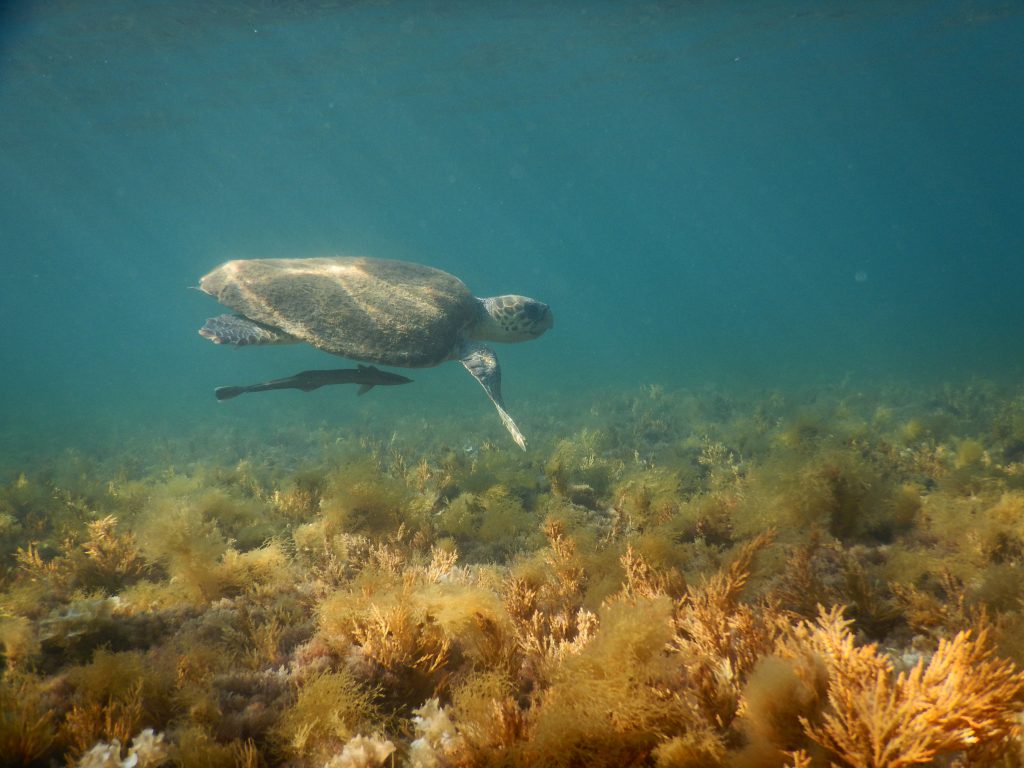
Who will protect the reef?
The “Sea Defenders” tried to promote a municipal bylaw that would define a minimum distance that motorized vessels would keep from the shore, and thus allow the continued diving and discovery of the reef’s secrets, in front of the Haifa Municipality.
The Ministry of the Interior later issued an amendment to the Coastal Law regarding the issue, but with a fundamental difference: the amendment proposes to allow surfing, windsurfing, and kayaking in Bat Galim, but does not list swimming or diving.
“Bat Galim Bay is an international-level water sports arena, and all the knowledge we have acquired about the reef are thanks to diving and snorkeling,” says Ohayon, who fears that following the new proposal, some of these activities will no longer be possible.
Already today, the ecosystem of the Bat Galim reef is affected by waste pollution, overfishing, and municipal water run-off. As long as there is no legislative action to protect the reef, the situation might become worse. According to Ohayon, as long as the reef is not protected by law, a new marina could be built on the site, or parts of the beach may be dried up for a new hotel. “As a result of such changes, the living space and food availability for animals will shrink, and the various species, some of which have been living and breeding here for hundreds of millions of years, may no longer be able to survive here,”
Ohayon describes that her vision is an accessible marine nature park, a transition area from the bustling urban waterfront bordering the Rosh HaCarmel Marine Reserve in the east.” There is tremendous potential here for the city itself, which could benefit from a local eco-tourism hotspot. Residents and visitors could get to know the fascinating nature up close and learn about it. Most importantly, this is an opportunity to protect the reef’s unique ecosystem,” says Ohayon. “All that is needed is one of the authorities to step up,” Ohayon concludes.
The Israel Nature and Parks Authority’s response:
“The area that was part of the initial plan for the Rosh HaCarmel Marine Reserve is, indeed, of ecological value but was discarded due to planning reasons. The Israel Nature and Parks Authority will be happy to assist the Haifa Municipality in developing and promoting the area for conservation purposes as an urban marine park or in any other way it chooses.”
Haifa Municipality response:
“The Haifa Municipality is aware of the natural values found in the Bat Galim Reef. However, the only body authorized to declare a nature reserve is the Israel Nature and Parks Authority. The Haifa Municipality is also aware of the exceptional sea conditions of the Bat Galim Bay and encourages non-motorized water sports. Further, the municipality is promoting the establishment of a diving and windsurfing club and intends to preserve the place as such and encourage surfing competitions, activities for water education for children, and more.
Ministry of the Interior response:
“The amendment of the proposed law for regulating bathing places refers to a declaration by the Minister of the Interior for beach sections where swimming is prohibited. The accompanying explanation of water sports is following the local authority’s request to allow water sports in these sections of the beach. For any additional information on the types of water sports, please contact the local authority.”
This ZAVIT article was also published in Ynetnews on 08/24/2020.
